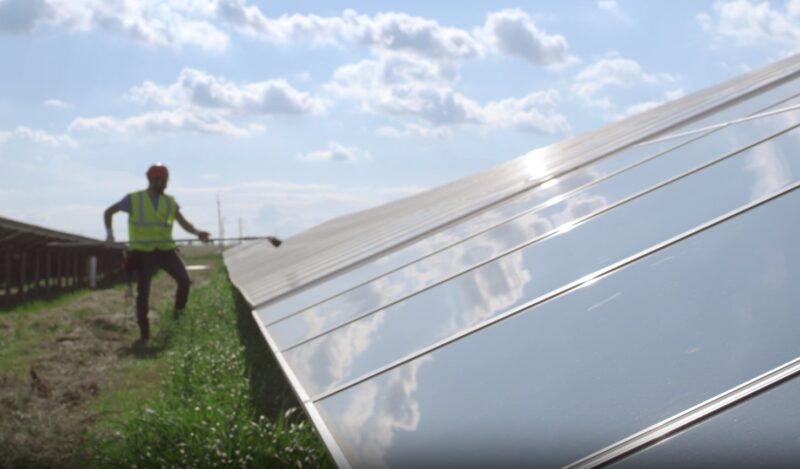Solar panels have become a staple in many homes, offering a sustainable way to generate electricity. Their efficiency, however, is directly linked to how clean they are.
Just like any other surface exposed to the elements, solar panels can accumulate dirt, grime, and other debris. While rain can wash away some of this, it’s not always enough, especially in drier climates or areas near construction sites.
Let’s explore the importance of keeping these panels clean, how often you should do it, and some safety precautions to keep in mind.
Tools and Materials
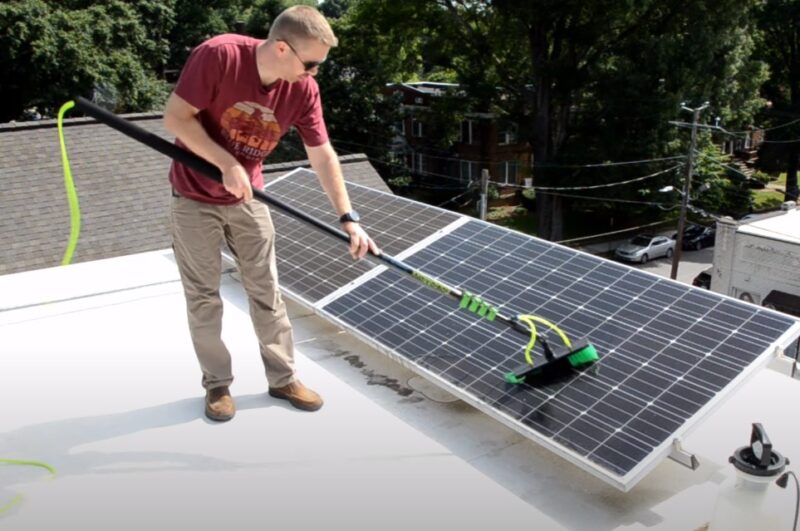
Before you start cleaning your solar panels, it’s essential to gather the right tools and materials. Here’s a list of what you’ll need:
| Tool/Material | Purpose |
| Soft bristle brush | To gently remove dust and debris |
| Telescopic extension pole | To reach the panels without climbing |
| Garden hose | For rinsing the panels |
| Sponge, squeegee, or soft cloth | For wet cleaning |
| Gentle dish soap (optional) | To boost cleaning power if needed |
It’s crucial to use non-abrasive materials to avoid scratching the panels, which can reduce their efficiency. Remember, the goal is to enhance their performance, not hinder it.
Pre-Cleaning Preparations
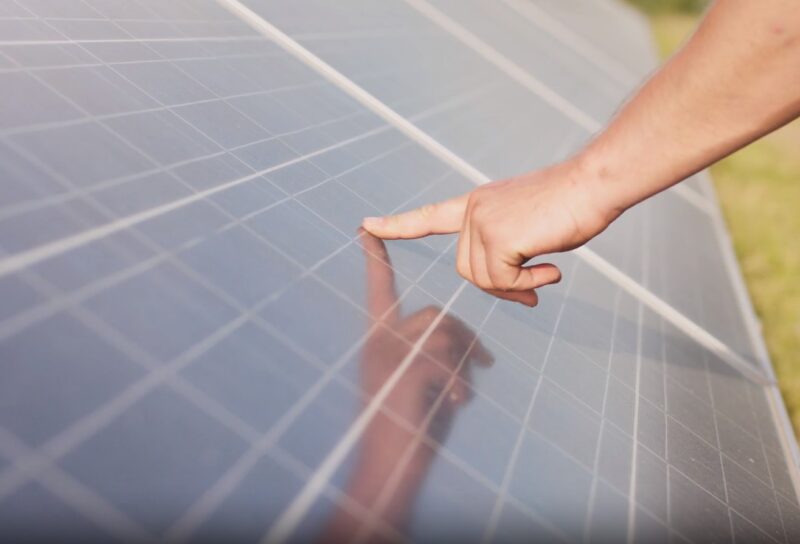
Before you begin the cleaning process, there are a few preparatory steps to ensure safety and efficiency:
- Check for Damage or Loose Connections: Before cleaning, inspect your solar panels for any visible damage or loose connections. Addressing these issues beforehand can prevent further complications.
- Turn Off the Solar System: Safety first! Solar panels are electrical equipment, and it’s essential to turn them off before cleaning. This ensures that there’s no active current while you’re working on them.
- Plan Your Cleaning Schedule: It’s best to clean your solar panels during cooler parts of the day, like early morning or late afternoon. This minimizes the risk of the panels getting too hot, which can lead to cracking when cold water is applied.
Cleaning Methods
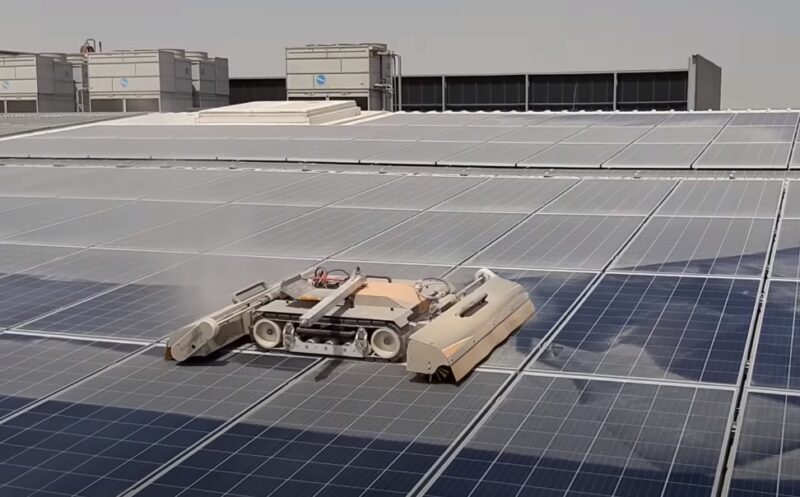
Dry Cleaning
Starting with dry cleaning is often the best approach. Over time, leaves, bird droppings, and dust can accumulate on your solar panels. While rain might clear away some of this, it doesn’t always get everything and can leave behind a dirty residue when puddles evaporate.
To begin the cleaning process, gently brush away debris using a soft-bristled tool. This can be done from the ground if your brush is attached to a telescopic extension pole. If you need to get closer, ensure you’re using an extension ladder and always prioritize safety.
Benefits:
- It’s a gentle method that prevents the spread and smearing of dirt.
- It prepares the panels for wet cleaning by removing loose debris.
Wet Cleaning
After you’ve brushed off the dry debris, it’s time to give your panels a thorough wet cleaning. Use a garden hose to spray down the panels, but avoid using high pressure as it can cause fine cracks on the panel surfaces.
For stubborn spots, use a sponge, squeegee, or soft cloth dunked into a bucket of clean water. If water alone doesn’t do the trick, a mild dish soap mixed with water can boost cleaning power. However, use soap sparingly to avoid leaving residues that can attract more dirt in the future.
Pressure Washing (when appropriate)
While pressure washing might seem like a quick way to clean large surfaces, it’s not always the best choice for solar panels. High-pressure cleaning can create fine cracks on the panels, compromising their efficiency. If you decide to use a pressure washer, always use low-pressure settings and maintain a safe distance to prevent damage.
Dealing with Stubborn Stains
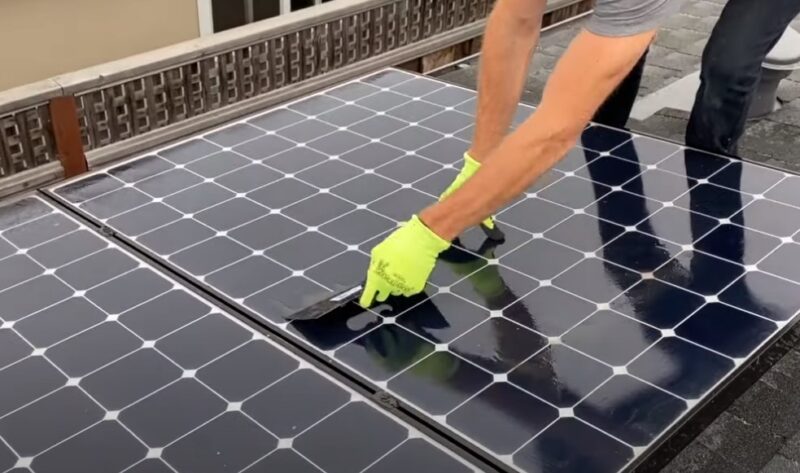
Solar panels, being exposed to the elements, are bound to encounter some stubborn stains.
These can range from bird droppings to tree sap, and even some mineral deposits left behind by rainwater. While regular cleaning can prevent many of these stains, some might require a bit more elbow grease.
- Identifying Common Stains: The first step in dealing with stubborn stains is identifying them. Bird droppings and tree sap are relatively easy to spot. However, mineral deposits might appear as a thin whitish layer on the panels, especially if you live in an area with hard water.
- Specialized Stain Removal Techniques: For bird droppings and tree sap, a gentle cleaning solution combined with a soft cloth can often do the trick. For mineral deposits, you might need a specialized solar glass cleaner. Always remember to rinse thoroughly after using any cleaning solution to prevent residue buildup.
Seasonal Considerations
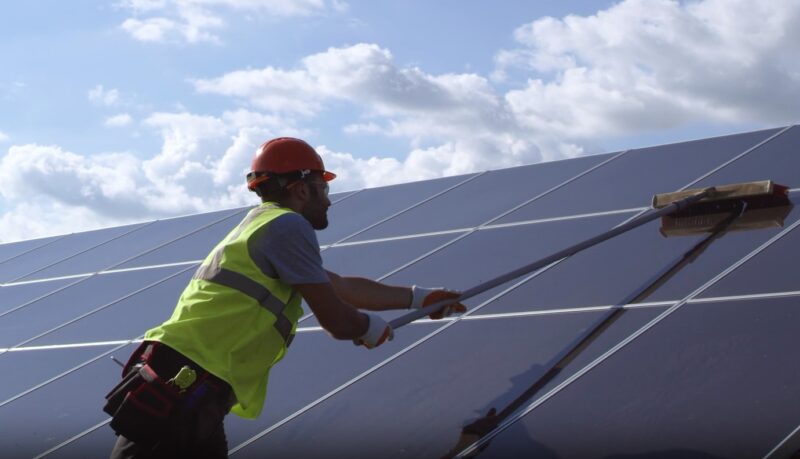
Solar panels are exposed to different environmental conditions throughout the year. As such, your cleaning routine might need some adjustments depending on the season.
- Cleaning Frequency During Different Seasons: In general, solar panels might require more frequent cleaning during spring due to pollen and during autumn because of falling leaves. In contrast, winter might see less dirt accumulation, but snow can be an issue in some areas.
- Preparing for Extreme Weather Conditions: Before any predicted extreme weather, such as hailstorms or heavy snowfall, it’s a good idea to check your panels for any existing damage and ensure they’re clean. This can help prevent further complications.
Safety Measures
Safety should always be your top priority when cleaning solar panels, especially if they’re installed on your roof.
- Wearing Appropriate Protective Gear: This includes gloves to protect your hands from cleaning solutions and non-slip shoes to prevent accidents, especially if you’re climbing onto a roof.
- Avoiding Electrical Hazards: Always turn off the solar system before cleaning. This ensures there’s no active current while you’re working on them.
- Preventing Ladder-Related Accidents: If you’re using a ladder, ensure it’s stable. It’s also a good idea to have someone on the ground to hold it steady. According to the Centers for Disease Control and Prevention, ladder-related falls account for a significant number of accidents annually.
Monitoring and Maintenance
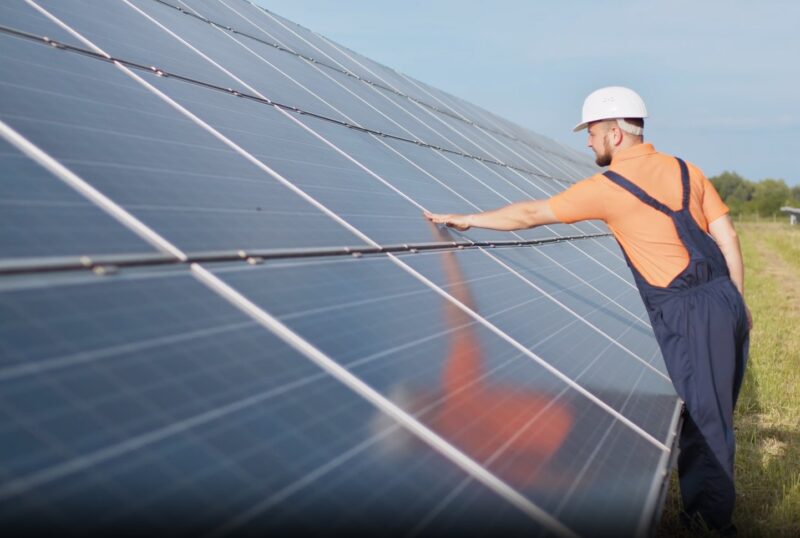
Solar panels are a significant investment, and like any other investment, they require regular monitoring and maintenance to ensure they’re operating at peak efficiency.
- Regular Inspections for Damage: It’s essential to periodically inspect your solar panels for any signs of damage, such as cracks, discoloration, or warping. Early detection can prevent minor issues from becoming major problems.
- Tracking Energy Production: Modern solar systems often come with monitoring systems that allow homeowners to track their energy production in real-time. This can be an invaluable tool. If you notice a sudden drop in energy production, it could be a sign that there’s an issue with one or more of your panels.
Environmental Impact
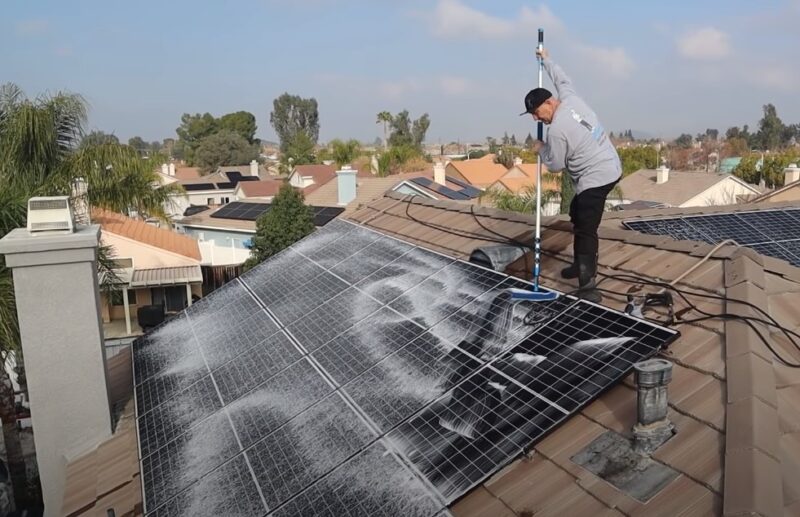
Solar panels are all about harnessing clean, renewable energy. However, the way we maintain them can also have an environmental impact.
- Eco-friendly Cleaning Solutions: When choosing cleaning solutions, opt for eco-friendly products. Not only are they gentle on your panels, but they also prevent harmful chemicals from running off into the ground.
- Disposing of Cleaning Materials Responsibly: If you use any cleaning cloths or sponges, ensure they’re disposed of responsibly. Consider using biodegradable or recyclable materials.
- Minimizing Water Usage: While cleaning, be mindful of your water usage. Using a bucket instead of a hose, for instance, can significantly reduce the amount of water needed to clean your panels.
FAQ
How much does it typically cost to clean solar panels?
The cost of cleaning solar panels can vary based on several factors, including the size of your panels and the type of cleaning required. For smaller panels, you might be able to handle the cleaning yourself with minimal expense. However, for larger installations or panels that have accumulated significant debris or stains, you might need to hire a professional solar panel cleaning service. It’s always a good idea to get a few quotes to understand the average cost in your area.
How often should I clean my solar panels to maintain their efficiency?
While the frequency of cleaning can depend on your location and the environmental conditions, a general rule of thumb is to check and potentially clean your panels at least once or twice a year. In areas with higher levels of dust, pollen, or bird activity, you might need to clean them more frequently. Monitoring systems that track energy production can also be a good indicator; a sudden drop in energy output might suggest that your panels need cleaning.
Are solar panels made entirely of glass?
No, while the outer layer of solar panels is typically made of tempered glass to protect the photovoltaic cells inside, they consist of multiple layers. Beneath the glass, you’ll find the cells themselves, usually made of silicon, and various other components that help capture and convert sunlight into electricity.
How can I ensure my solar panels last as long as possible?
Regular cleaning and maintenance are key. By keeping your panels free of debris and dirt, you ensure they operate at peak efficiency. Additionally, periodic inspections for damage and monitoring energy output can help detect and address issues early on. It’s also essential to follow any maintenance guidelines provided by the panel manufacturer or installer.
Conclusion
Solar panels are a testament to human ingenuity, allowing us to harness the sun’s power and convert it into clean energy. Keeping them clean and well-maintained ensures that they operate at peak efficiency, saving you money and reducing your carbon footprint.
Regular maintenance not only boosts their performance but can also extend their lifespan, making them an even more valuable investment. As we move towards a future where renewable energy sources become increasingly crucial, taking care of our solar panels is a step in the right direction for a cleaner, greener energy future.
Thank you for joining me on this journey to understand the ins and outs of solar panel maintenance. Here’s to a brighter, cleaner future!
